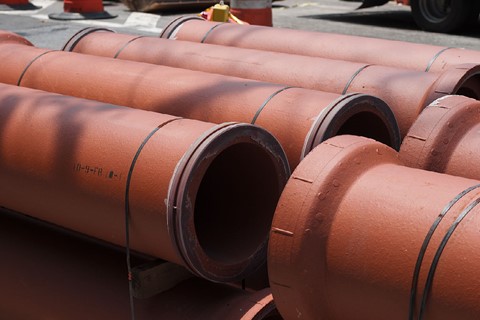Public water is an essential part of our community and of the businesses that operate within it. Any water that travels to and from commercial buildings is thoroughly inspected and treated to both local and federal standards. But knowing how your public water is maintained and what you can do to prevent compromises can ensure your own company’s supply remains safe for use and consumption. Read on to get in-depth knowledge on water quality control, preventative measures, and treatment processes.
A Bit of History
In 1974, Congress passed the Safe Drinking Water Act (SDWA) in order to ensure the safety and quality control of public drinking water and the systems used to store and distribute it. The SDWA assigned the Environmental Protection Agency (EPA) to oversee and regulate standards for clean water. Today, about 90% of the US population gets their water from the public water system (PWS). This water is sourced, treated, stored, and then distributed accordingly to local communities for usage and consumption.
Sourcing and Treatment
Freshwater sources for public water include lakes, rivers, and underground aquifers. In some cases, authorities will even create dams to contain and manage water supplies for nearby communities. While freshwater has the potential to be used and consumed, it must still be treated for contaminants, bacteria/organisms, and toxins. Additionally, it’s quality must be maintained during transport and at its destination point.
Water Quality Control
There are many ways in which water can become a hazard. At its source point, fresh water is filled with debris, sediment, and even fecal matter. It will have microorganisms and/or bacteria that can spread disease. Some examples include e.coli, legionella, and norovirus.
Water may also have high levels of minerals that can be dangerous to consume or use. For example, lead and mercury are common minerals that need to be filtered out. Other hazards such as mold can also present a danger and must be treated accordingly. In addition, chemical contaminants may also be present. For example, water sources located in proximity to farms may have to do additional testing and treatment for pesticides and/or fungicides.
These potential hazards must be filtered and treated before they can be dispensed to local populations. Water treatment facilities sanitize incoming water supplies through a process that includes coagulation and flocculation, sedimentation, filtration, and disinfection. Once processed, water can then be stored and distributed to residences and businesses.
For potable water, facilities will also utilize a process called fluoridation, which injects fluoride as a method of preventing tooth decay. As such, the majority of water provided to the public includes fluoride.
Prevention of Recontamination
While water is treated before being sent to local communities and businesses, it will still need to be maintained and monitored at its destination site in order to ensure the integrity of its quality.
Large underground mains and the smaller systems pipes that lead into homes and businesses have to be treated and inspected regularly to ensure there are no leaks, mold growth, or other compromises. Businesses must maintain and inspect their own systems and storage tanks (if applicable) in order to adhere to local, state, and federal standards.
Preventative measures include testing equipment and gauges, regular inspections, and everyday practices. Additionally, reaching out to your local water utility company for resources such as checklists, written guidance, and regulatory literature can be a beneficial move for your company. Implementing training and establishing personnel to oversee things can also help to ensure the quality and integrity of your water supply.
Treatment For Contamination
There may be instances where contamination may occur, even in spite of your best efforts. If your company’s water supply becomes compromised, try to identify the source of the problem. Did your business close for an extended period, leaving mold to grow in stagnant water pipes? Was your water tank perhaps not treated regularly to ensure bacteria prevention?
Your next course of action should be to call in a reputable water treatment company to address the issues at hand and then help to establish a reliable system to ensure your business’s water stays safe.
Have a water contamination issue that needs to be addressed? Or just want to make sure your company’s water supply is at the standard it needs to be? We’re here to help! Our experts provided the highest quality expertise, skills, and equipment that your business needs to keep your water supply at its best. Reach out today to learn more!



